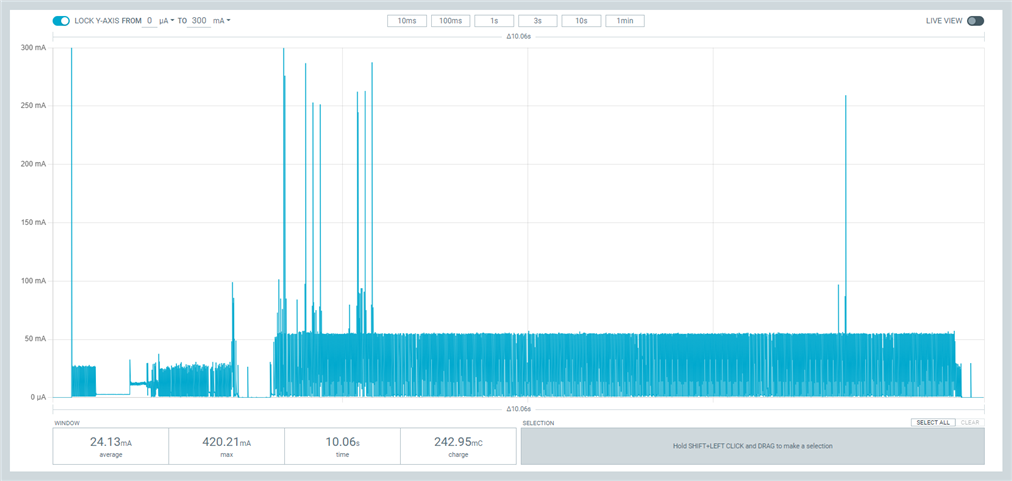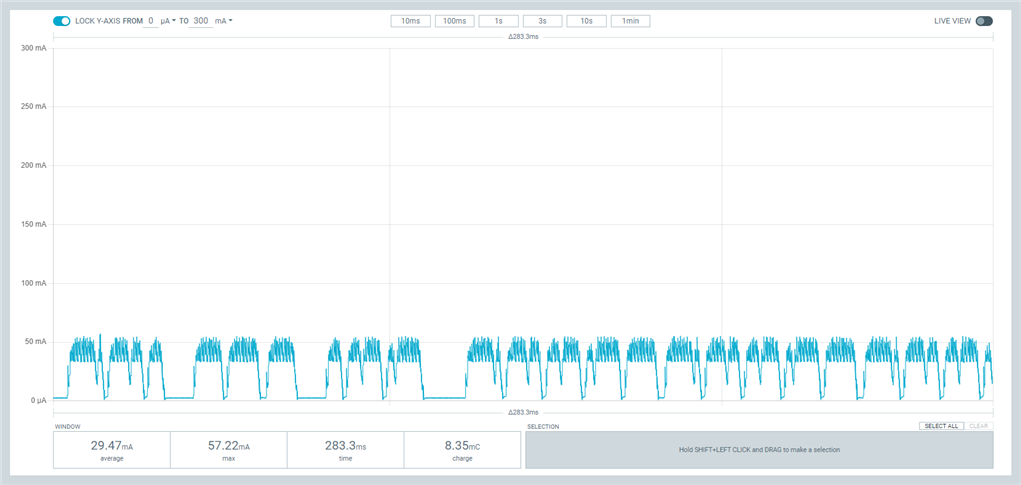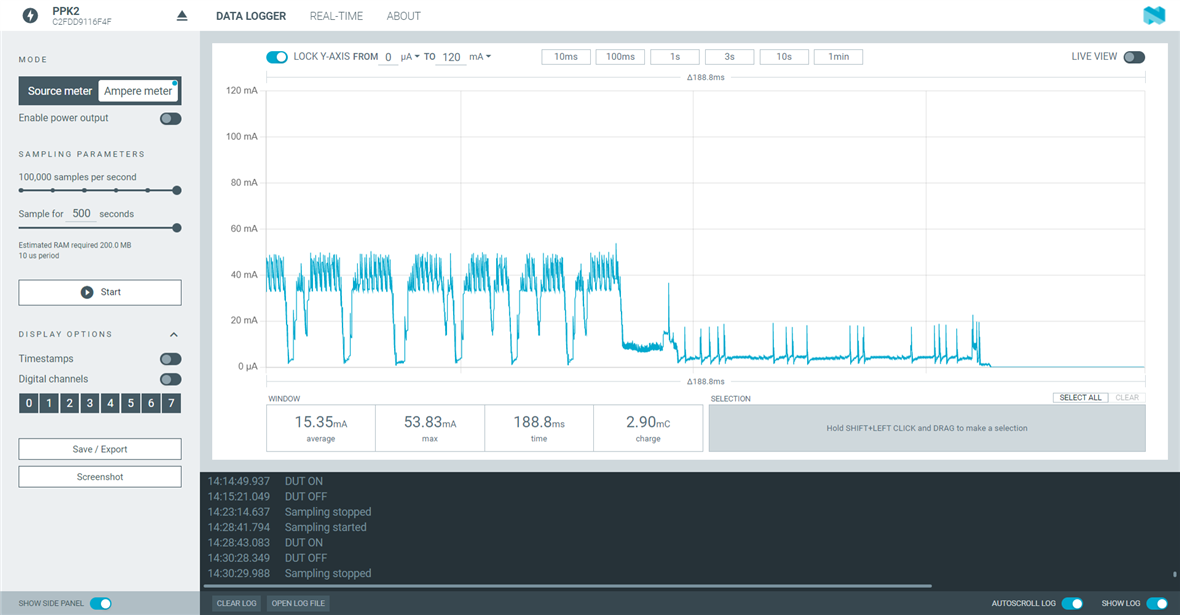Hi,
I've been trying to verify how much charge is needed to operate the nRF9160, so I did some measurements using the nRF9160-DK and the Power Profiler Kit II. I started with the recommended udp sample code (SDK version is 2.2.0). I could see that during the PSM mode, the consumption was as low as expected, but I found some inconsistencies regarding the eDRX phase, where the current profile looks different from what I've seen in other waveforms and tutorials (for example here https://developer.nordicsemi.com/nRF_Connect_SDK/doc/latest/nrf/app_dev/optimizing/power.html) and consequently the average current draw is also higher. In the beginning, I had the iBASIS sim card and later changed to a local operator here in Denmark, in case the roaming mode was important, but I didn't see any changes in the power profile.
Have a look at this capture, which shows the whole transaction:

and then also a zoom-in to the eDRX phase:

I also have a modem trace file, if it helps: 1122.trace-2023-04-14T08-36-53.639Z.bin
My basic question is whether this behavior is just what the specific network here in Denmark does, therefore I can't do anything to improve it, or whether this is somehow hardware/software related and I can do something to bring the consumption down.



